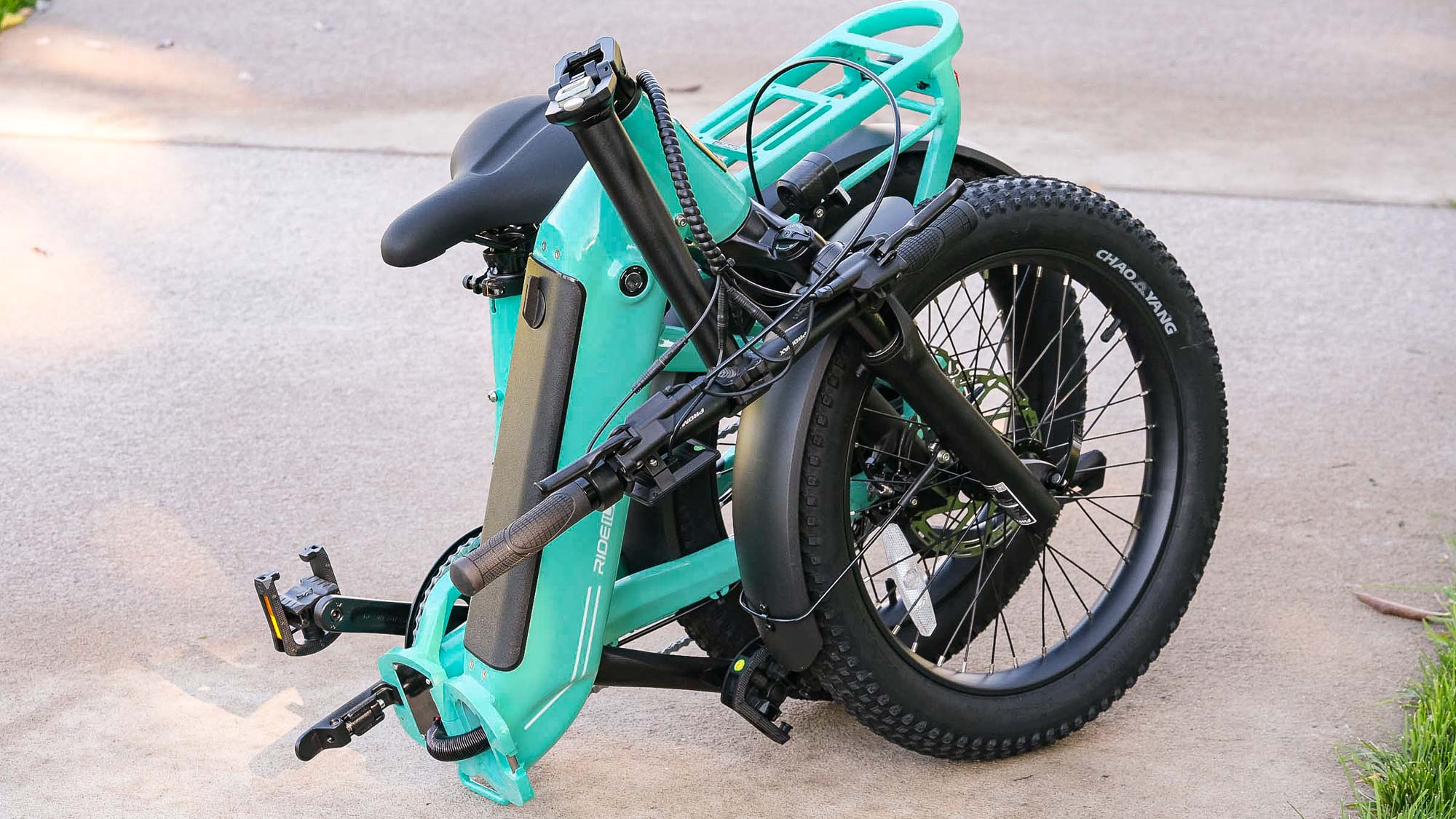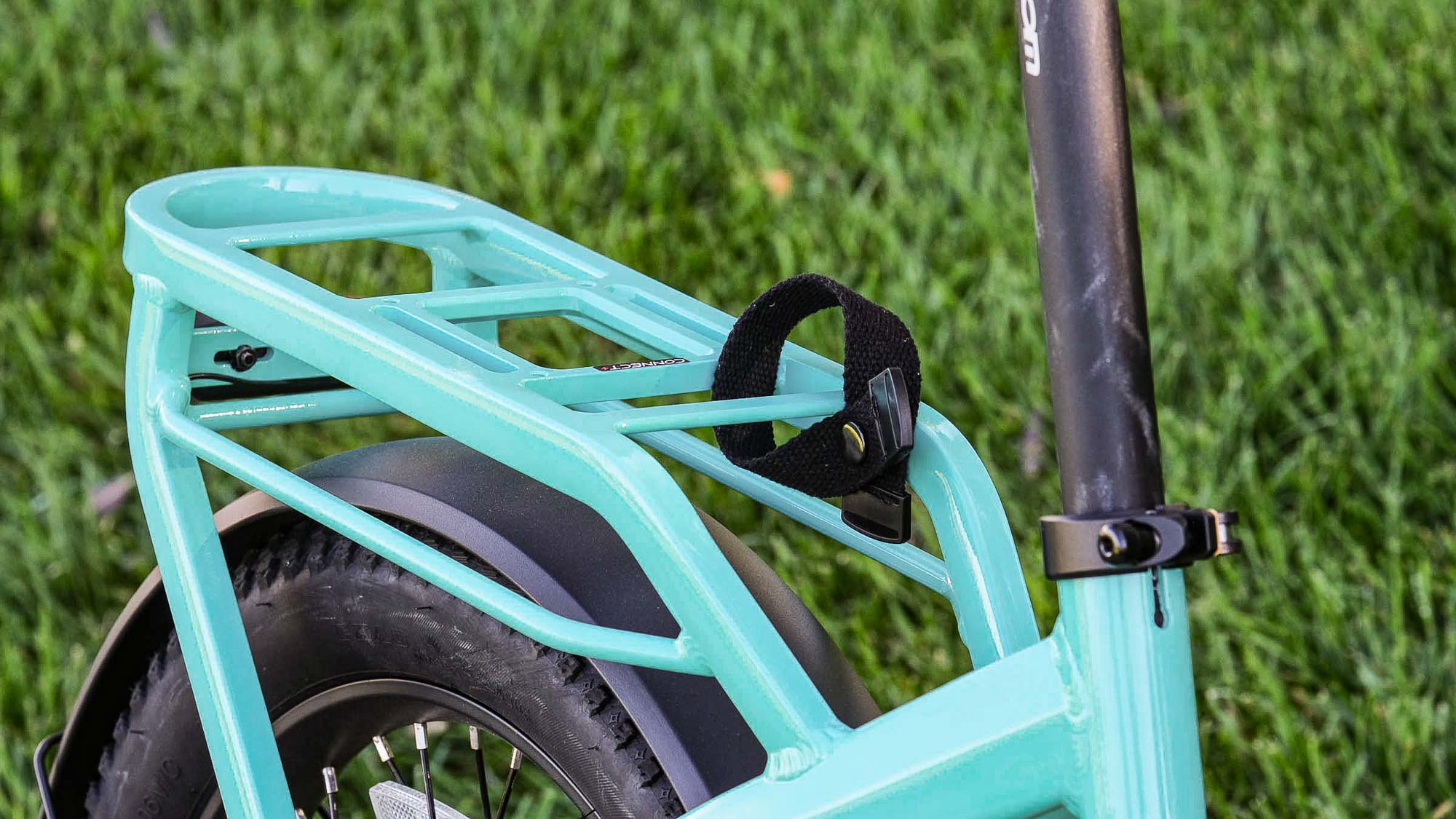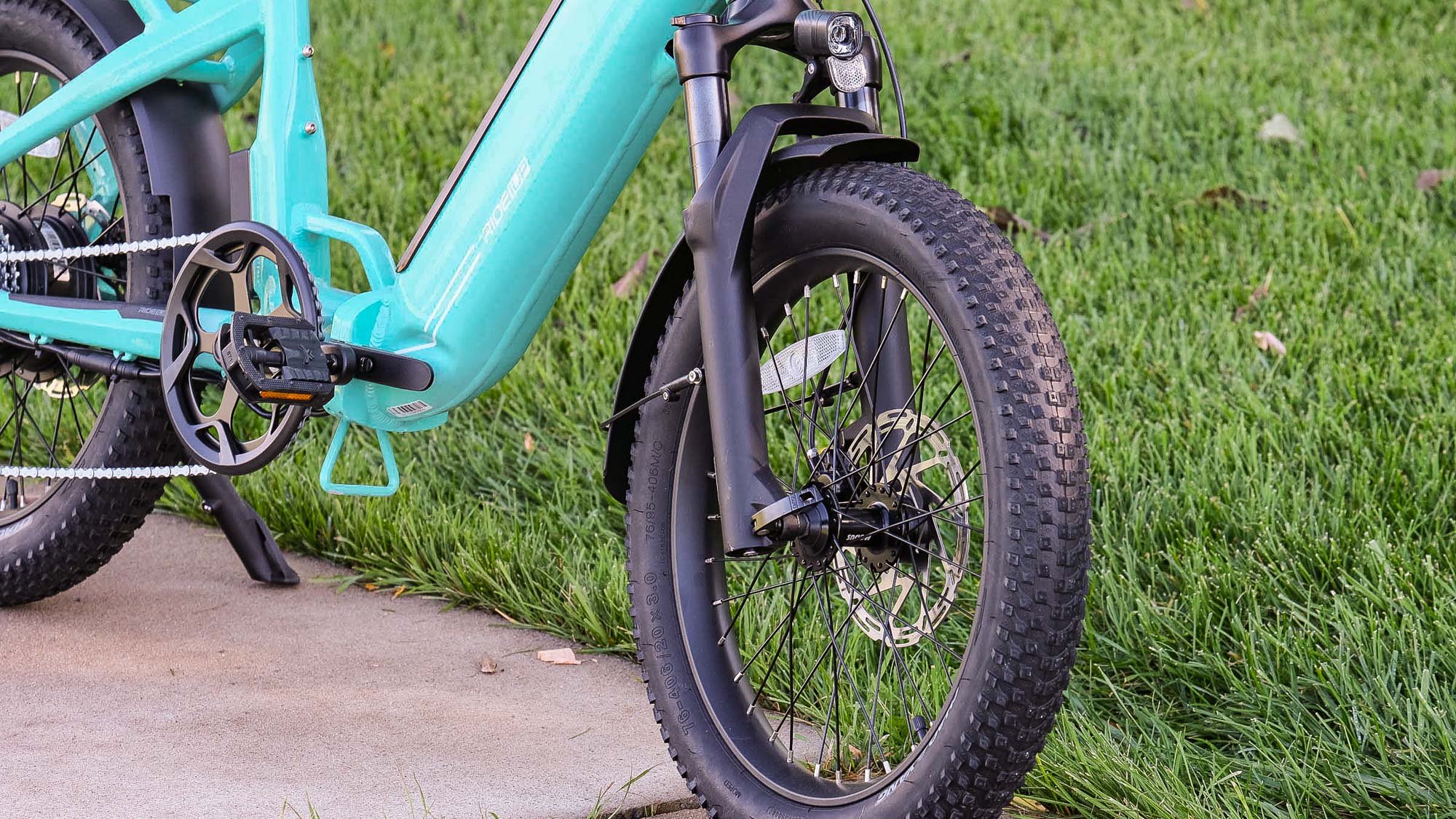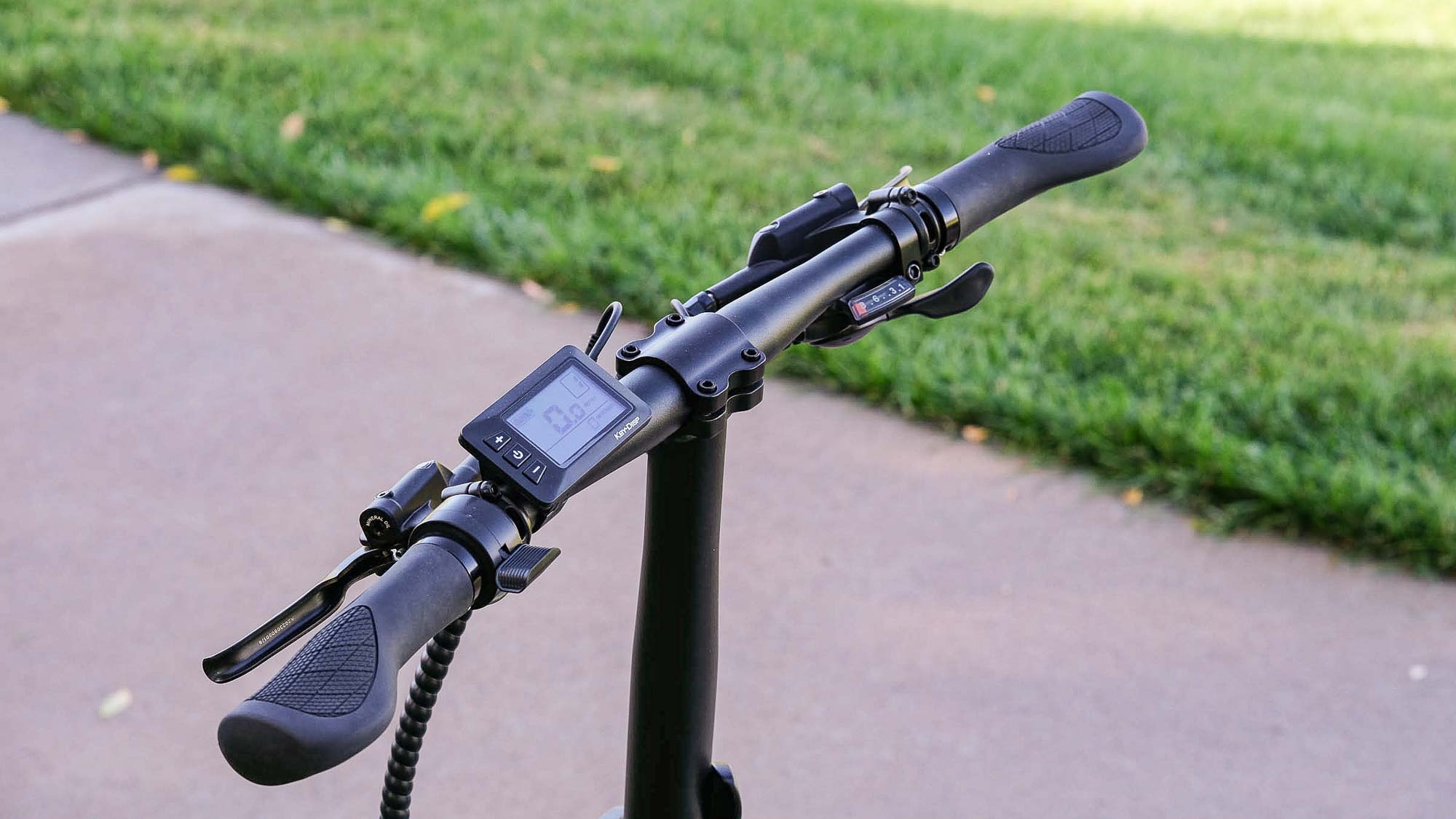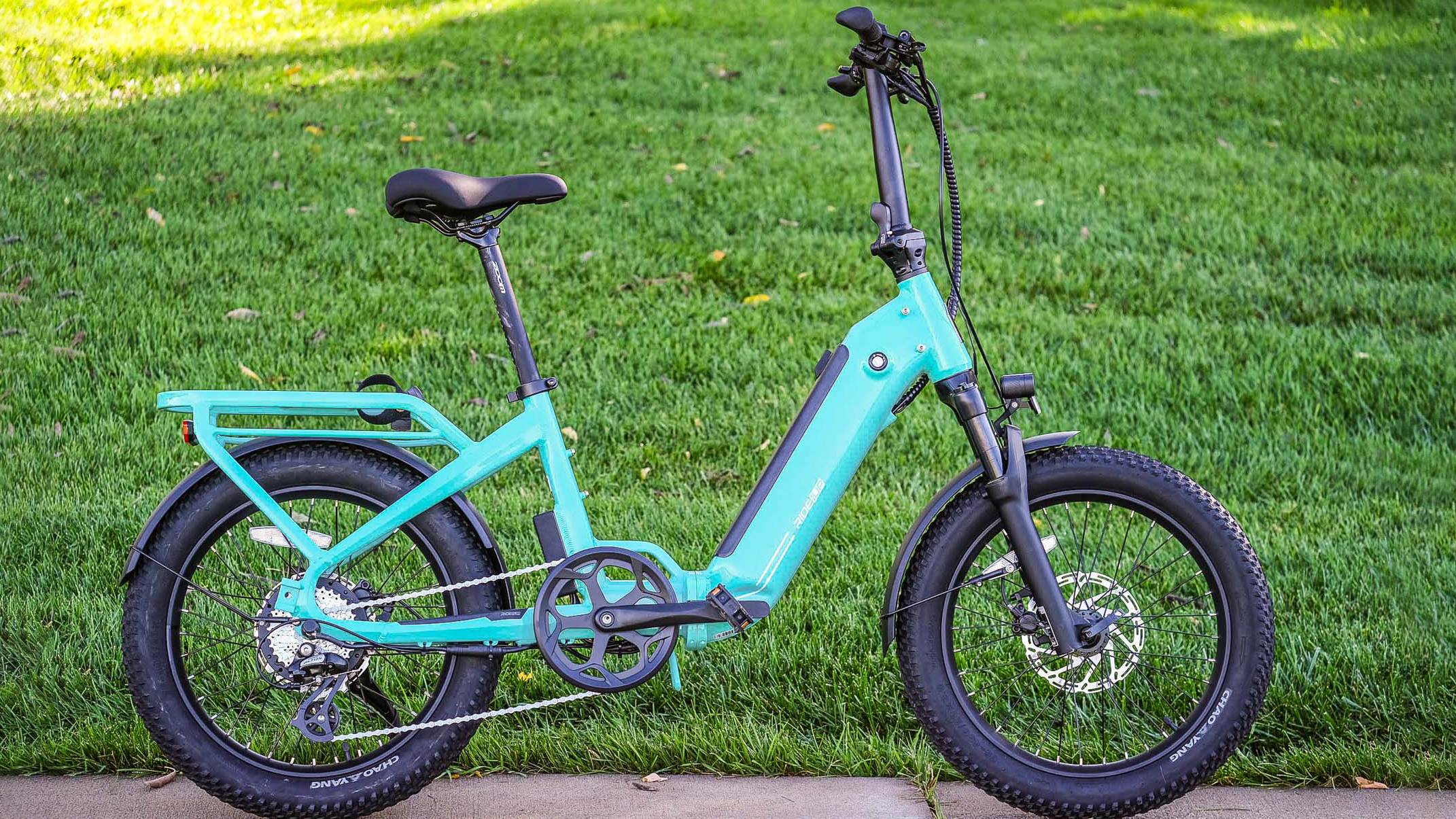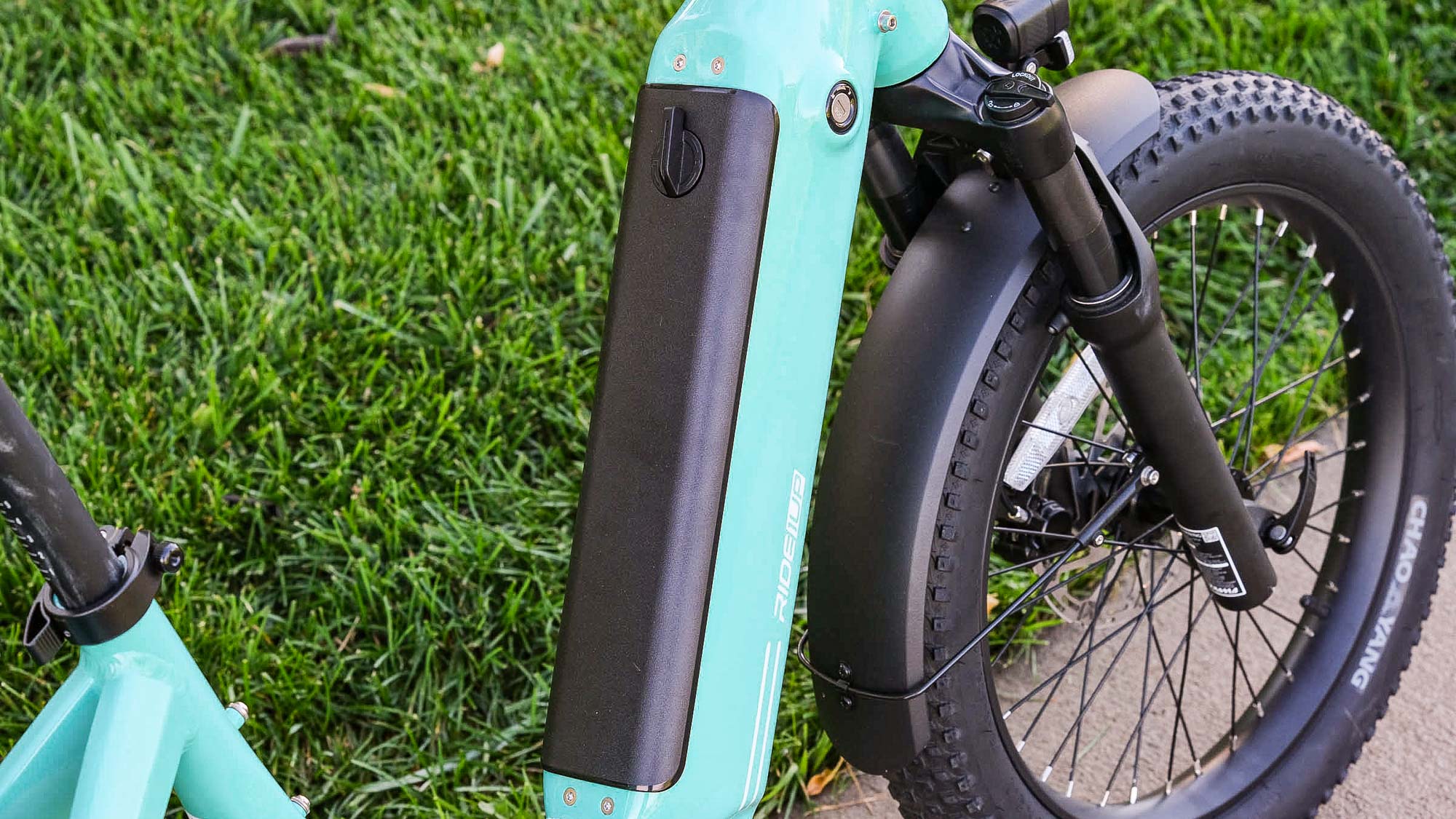Tom's Guide Verdict
The Ride1Up Portola is a powerful, fun, and inexpensive folding bike that will appeal to city commuters who don’t have a lot of space to store an electric bike.
Pros
- +
Powerful motor
- +
nimble yet stable ride
- +
good battery life
- +
fits riders of various heights easily
Cons
- -
Hinge squeaks during riding
- -
strap that secures the two halves when folded is too short
Why you can trust Tom's Guide
Weight: 59 pounds
Motor: 48V, 750W sustained, rear hub
Battery: 48V, 104Ah or 48V 13.4Ah
Maximum advertised range: 40 miles (13.4Ah battery)
Drivetrain: Shimano Altus 8-Speed
Size: 66 x 44 x 18 inches
Folding e-bikes like the Portola Ride1Up aren’t for everyone, but if you’re short on storage space in your office or apartment, they make a lot of sense. That low price tag doesn’t hurt, either.
As folding e-bikes go, the Portola gets a lot of things right. It accommodates riders of various heights, it’s got a powerful motor, wide and stable tires, and a lot of functional touches that make it a solid choice for short commutes.
The execution isn’t perfect — you should check out our list of the best electric bikes for other options — but at this price, it’s hard to beat the Portola if you’re in the market for a folding e-bike that’s as functional as it is portable.
Ride1Up Portola review: Price and availability
Ride1Up’s Portola folding e-bike is available now on the Ride1Up website. Ride1Up offers two configurations at two different prices:
- $995 for 10.4ah battery
- $1,095 for 13.4ah battery
Both options were available for purchase as of October 23, 2023.
Ride1Up Portola review: Design
The Portola folds at its center, just in front of the bottom bracket area. It’s held in place by a locking lever that, when released, allows the frame to hinge and fold on itself. When folded, the bike measures approximately 36 inches long, 16 inches wide, and 30 inches tall. The handlebars also collapse using a similar lever. The pedals, too, fold to give the overall folded package a narrow, small profile. The two halves secure together using a button strap fixed to the rear rack.
When unfolded and ready to ride, the Portola features plenty of nice touches to make the ride more fun and comfortable. For starters, there are fenders front and rear to protect the rider from road spray coming off the chunky, 20-inch by 3-inch-wide tires. Integrated lights front and rear keep you seen and allow you to see in low light. And hydraulic disc brakes offer plenty of stopping power in all conditions.
Get instant access to breaking news, the hottest reviews, great deals and helpful tips.
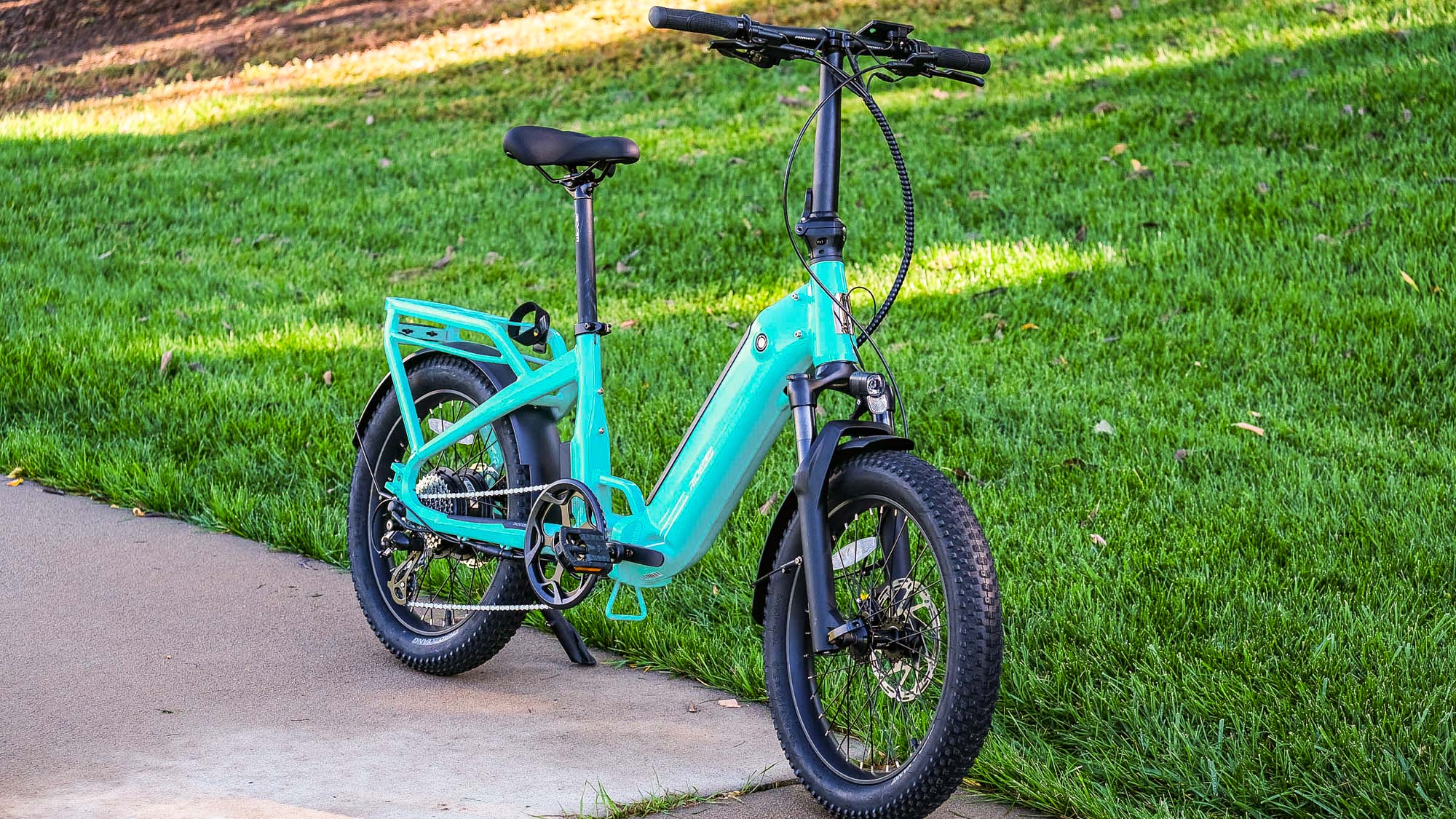
A suspension fork up front takes the edge off road vibration with 80 millimeters of travel. In back, the rear rack is integrated into the frame and can accommodate a passenger seat (sold separately).
The bike is shipped to your door set up as a Class 2 e-bike with a throttle — that means it features a max assist speed of 20 mph — but it’s possible to configure it into a Class 3 e-bike with assist speeds up to 28 mph if you’re after more assist speed.
Ride1Up Portola review: Performance
Any time a budget-friendly ebike lands on my doorstep, I look at the front suspension with a wary eye. At best, front suspension has been only marginally useful, especially with big, wide tires that can be run at low pressures to the same effect. I usually find front suspension on bikes like this superfluous, and it’s no exception on the Portola. It works just fine, but it adds weight and complexity that you likely wouldn’t notice if it was absent altogether.
But that’s really my only major complaint. The Portola offers a ton of power, and it’s easy to get going from a dead stop, even on a hill. Usually I’d need to shift into the easiest possible gear to make this happen, but the Portola got going even in some of the harder gears with no problems.
Because it’s fairly small and the motor is quite powerful, you’ll find yourself getting up to speed almost a bit too quickly. It would be easy to go too fast into a corner and lose control, so be sure to spend some time getting a feel for the bike’s power and handling.
The Portola comes set as a Class 2 ebike out of the box, which means the assist will cut out at 20 mph. At one point, while I was using the throttle exclusively, the assist didn’t cut off until 23 mph. That happened more than once, which is unusual but certainly not a dealbreaker. It is, however, something you’ll have to note to maintain control of the bike.
The bike is otherwise fun, comfortable, and surprisingly nimble while maintaining stability in corners and over rough terrain. It doesn’t feel too twitchy, as though I have to constantly pay attention to the steering, like a lot of folding bikes do. Brompton folding bikes, for example, feature skinny tires and a steep head tube angle that makes steering ultra-responsive to the rider’s steering input. The Portola’s steering stability probably has to do with the wide tires, which can provide more stability and bump absorption than much thinner tires run at higher pressures.
During my first few rides on the Portola, the hinge at the bottom of the frame, which allows you to fold the bike, squeaked a bit when riding. It went away over time, and I think it was mostly a matter of ensuring the locking lever was fully engaged.
The folding function is nice if you’re short on space, but keep in mind that the Portola is still a fairly heavy bike when compared to a non-motorized folding bike. If you’ll be picking up the bike to store it, this one may not be the best option. Among the best electric bikes we’ve tested, the GoCycle G4i and the Brompton Electric C-Line Explore are almost half the weight of the Portola, but they both cost three times as much.
To lock the bike in the folded position so it doesn’t sway, you’ll need to use the attached strap. It’s fixed to the frame on the rear rack, and you can loop it through the fork or another part of the front of the bike. It’s a simple system, but it works. The strap is, however, fairly short, which can make securing the front of the bike more difficult than it should be.
I also found that the fork can rub on the rear part of the frame when the bike is folding, which could lead to scraping and damage.
The folding system can use a bit of refining, but the Portola makes up for it in its ride quality, functionality, and exceptional motor power.
Ride1Up Portola review: Battery life and performance
The Portola can be purchased in two different configurations: a 10.4Ah battery, or a 13.4Ah battery. Curiously, I was sent a 14Ah battery, which doesn’t appear to come stock in either configuration.
I rode for 7 miles on first ride, using the throttle completely pinned the whole time. I only lost 1 out of 5 bars of juice during that time. That’s an impressive performance for a battery when the throttle is pinned down that long.
The battery has since performed well enough that I’m comfortable endorsing Ride1Up’s advertised range of 40 miles on the 13.4Ah battery.
Ride1Up Portola review: Accessories
While pricing has not yet been released on accessories, I can confirm that the following add-ons will be available for an additional cost:
- Front rack
- Passenger kit
- Panniers
- Basket
The Portola comes standard with a rear rack that’s integrated into the frame, front and rear fenders, and integrated front and rear lights.
Ride1Up Portola review: The competition
Two similar bikes that compare nicely to the Portola include the Heybike Mars ($900) and the Lectric XP 3.0 ($1,200). Both of those models feature oversized tires that allow for added stability and more bump absorption. And both also fold down for storage.
Of the three, the Portola wins in aesthetics, power, build quality, and adaptation to more sizes of riders, due to its deeper step-through design.
Ride1Up Portola review: Verdict
Riding the Portola has been an enjoyable experience. It packs a punch for such a small bike, and it adapts easily between me (5’11”) and my wife (just a touch under 5’4”). Buy this for the great price, powerful motor, and good battery life.
While the hinge lever could be improved to prevent squeaking and excess movement, and the suspension fork feels superfluous, the Portola excels in enough categories that it’s an easy endorsement for urban commuters looking for a powerful but inexpensive e-bike that can save a bit of storage space.

Dan Cavallari is the former technical editor for VeloNews Magazine, who currently reviews electric bikes, bike lights, and other bike accessories for Tom's Guide. In addition to VeloNews, his work has appeared in Triathlete Magazine, Rouleur Magazine, CyclingTips.com, Road Bike Action, Mountain Bike Action, CycleVolta.com, Tomsguide.com, and much more. Dan also hosts two podcasts on his site, Slow Guy on the Fast Ride: One is about cycling and other outdoor activities, while the other looks at mental health issues. Most recently, Dan also covered the 2022 Tour de France. Dan lives outside of Denver, Colorado with his family.

